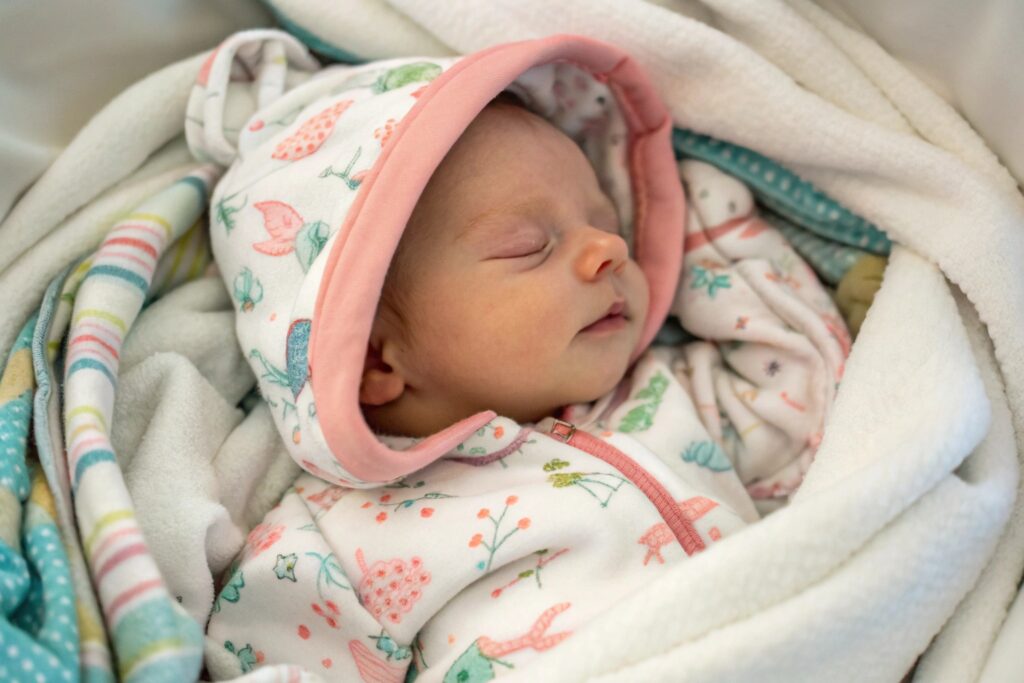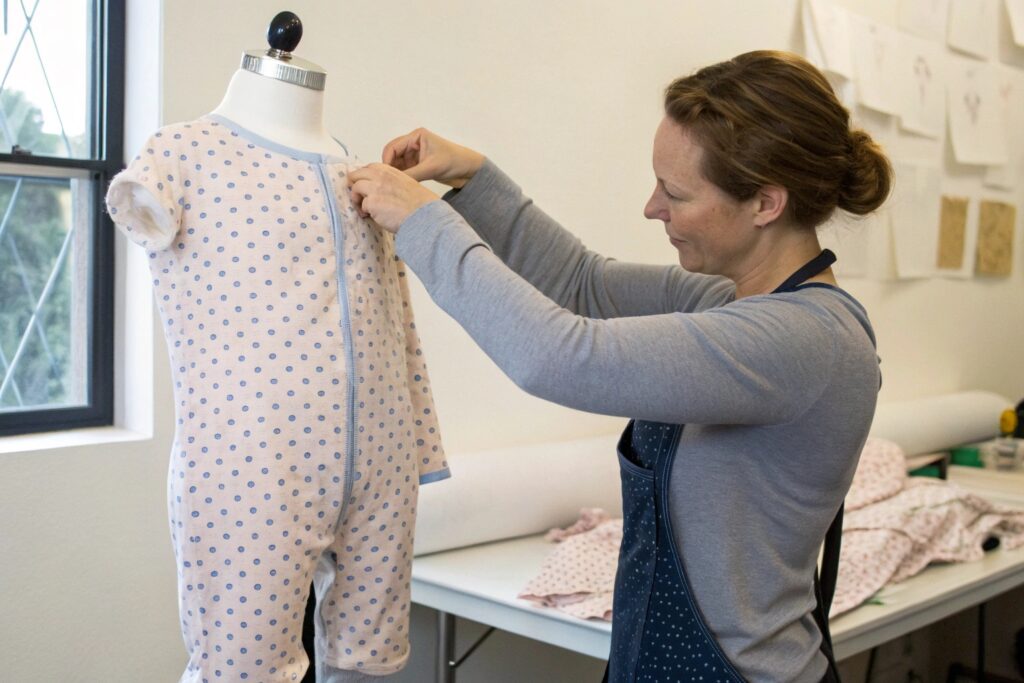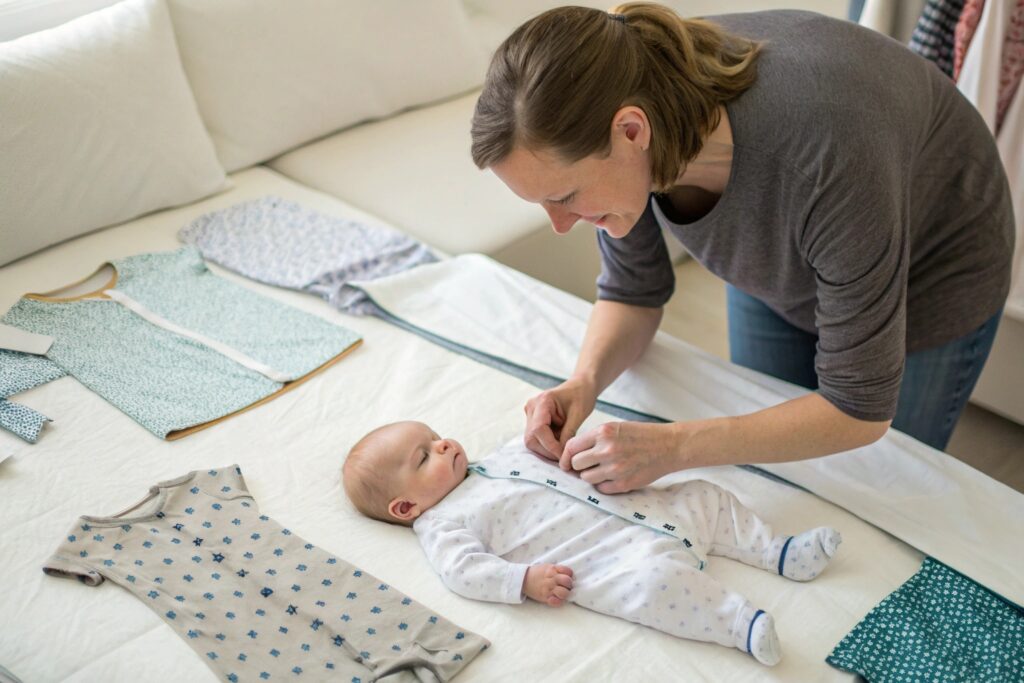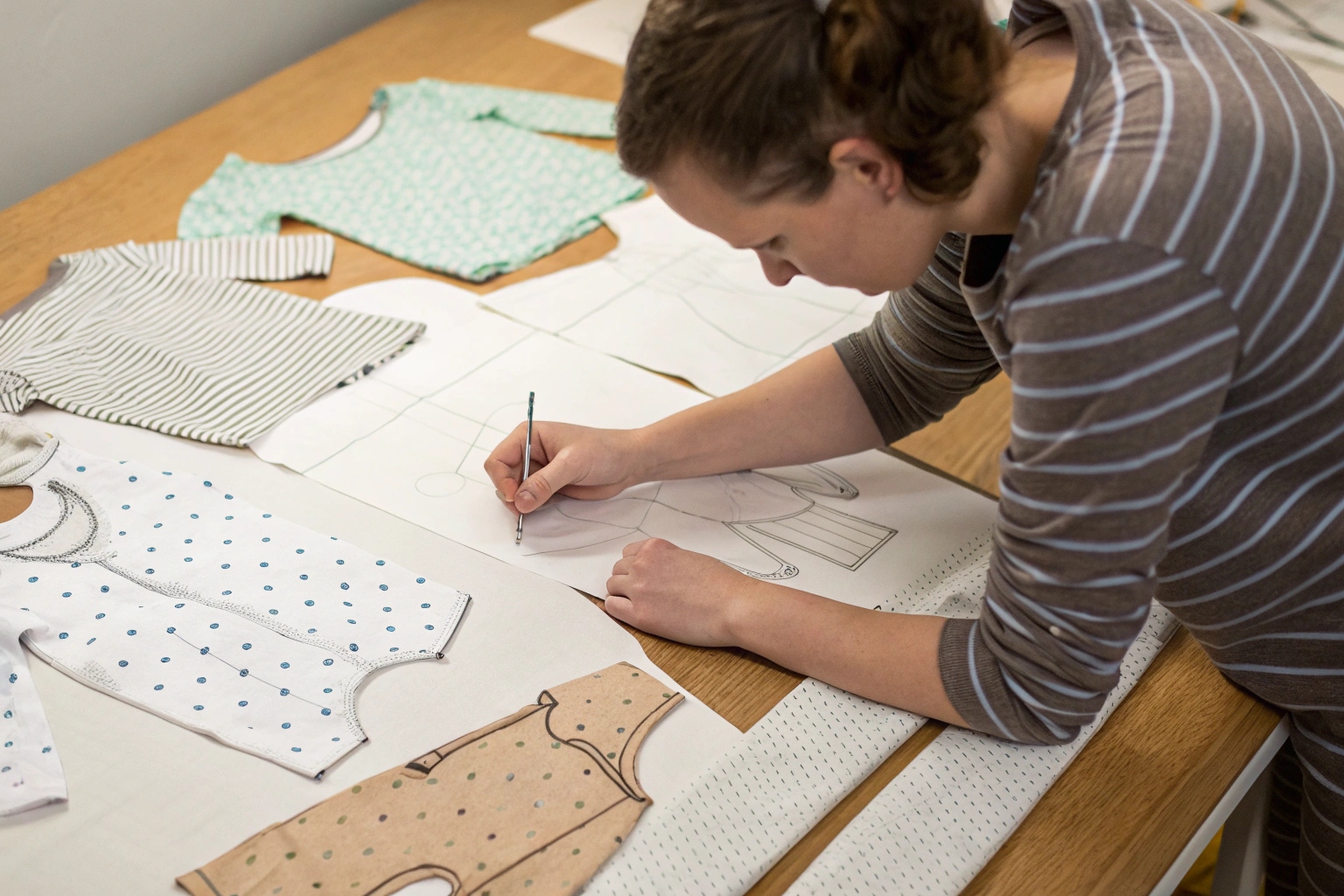A cute design is important—but if it doesn’t fit well, parents won’t buy again. Behind every great piece of kidswear is a well-constructed pattern.
Patterns determine how kidswear fits, moves, and feels. If the pattern isn’t right, the garment can be too tight, too short, or too uncomfortable—even if the fabric and design are perfect.
In this article, I’ll explain how patterns shape fit, why grading is essential, and how to refine patterns across baby and children’s age groups.
Why Pattern Grading Matters in Kidswear Fit?
Babies and kids grow fast—but not in the same way. That's where proper pattern grading comes in.
Pattern grading ensures that kidswear fits correctly across different sizes by adjusting measurements proportionally. Without accurate grading, larger sizes can become misshaped or uncomfortable.

What is pattern grading?
Pattern grading is the process of resizing a base pattern up or down to create a full size range while maintaining shape and proportions.
Why it matters:
| Factor | Impact on Fit |
|---|---|
| Shoulder grading | Prevents gaping or tightness at neckline |
| Armhole adjustments | Ensures mobility and comfort |
| Torso adjustments | Helps with belly and diaper room |
| Sleeve length | Matches proportional arm growth |
What happens with poor grading?
- Sleeves too long in larger sizes
- Neck openings too wide in baby sizes
- Pants too tight in the seat or thigh
- Tops too short in toddlers with long torsos
At Fumao, we use baby and kids-specific grading rules—not adult grading scaled down—to ensure every size fits just right.
Common Pattern Issues in Baby Clothing Design?
Even small design flaws can lead to poor fit in babywear. Here’s where things often go wrong.
Common pattern issues in baby clothing include overly tight neck openings, insufficient diaper room, short bodices, and poorly placed seams that cause irritation.

Frequent babywear pattern mistakes:
| Problem | Result |
|---|---|
| Tight neck holes | Difficult to dress, irritates baby |
| Short crotch or rise | Rides up, exposes diaper |
| Narrow sleeve openings | Hard to pass baby hands through |
| Seams at high-friction areas | Cause rashes or discomfort |
| Inconsistent grading | Size jumps don’t align with real babies |
Real-world examples:
- A cute romper that doesn’t snap over a cloth diaper
- A hoodie that’s too snug at the wrists
- A top that rides up when the baby crawls
To avoid these issues, Fumao tests every babywear style with fit models in different sizes before final production.
How to Adjust Patterns for Different Age Groups?
Newborns, toddlers, and school-age kids move differently and have different proportions. That means each age group needs a tailored fit.
To adjust patterns for different age groups, modify the base pattern to reflect developmental changes—like torso length, belly size, shoulder width, and limb length.

Pattern changes by age group:
| Age Group | Fit Consideration |
|---|---|
| 0–6 months | Extra room for diapers, envelope necks |
| 6–24 months | More movement, crawling and walking fit |
| 2–5 years | Proportional limbs, larger head openings |
| 6–10 years | Leaner shapes, growth-spurt flexibility |
Adjustments to make:
- Widen necklines for infants
- Add diaper panel length in bodysuits
- Introduce waist shaping for toddlers
- Refine sleeve and leg tapering for older kids
At Fumao, we maintain separate pattern blocks for each growth stage, rather than scaling one pattern across the entire range.
Tips for Creating Better-Fitting Kidswear Patterns?
Want your kidswear line to stand out for its fit? These pattern tips can make a big difference.
To create better-fitting kidswear patterns, start with age-specific fit models, use stretch-appropriate ease, and test your patterns with real kids before finalizing your size set.

Proven tips for better fit:
| Tip | Why It Works |
|---|---|
| Use flatlock seams in babywear | Prevents chafing and bulk |
| Add belly ease in tops | Supports natural baby shape |
| Choose raglan sleeves for range | Easier arm movement |
| Adjust sleeve cap height | Prevents tightness in toddler sizes |
| Design with layering in mind | Room for undershirts or diapers |
Bonus: Testing strategy
- Fit test each base size with real children
- Measure shrinkage before final sample approval
- Update your pattern seasonally as trends and fabrics change
At Fumao, our pattern team works closely with sample sewers and quality control to spot issues early and refine before bulk cutting.
Conclusion
Patterns are the blueprint of fit in kidswear. Whether designing for newborns or tweens, smart pattern design and careful grading ensure comfort, style, and repeat buyers. For brands that care about quality, investing in proper pattern development is the key to success.










